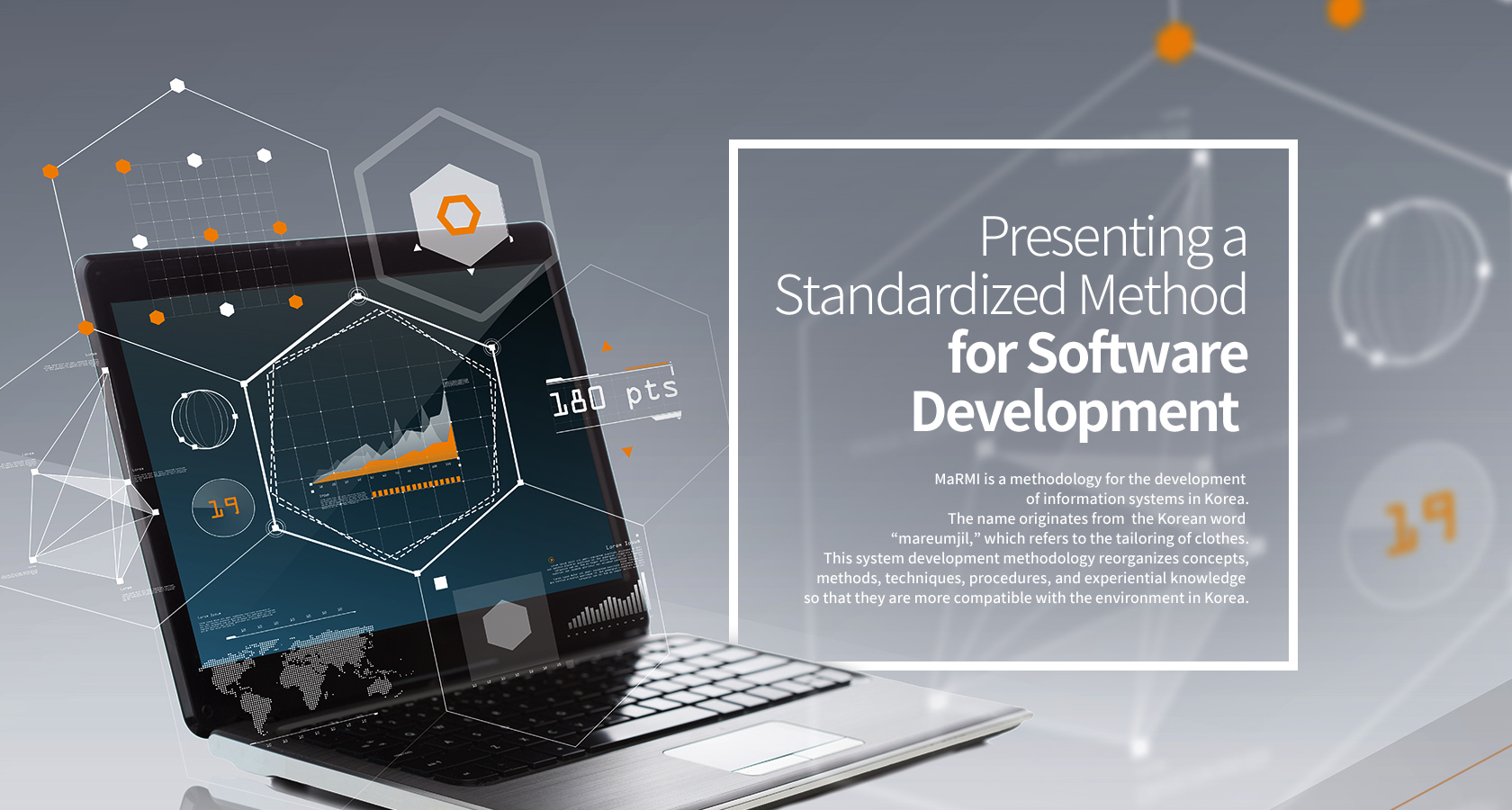
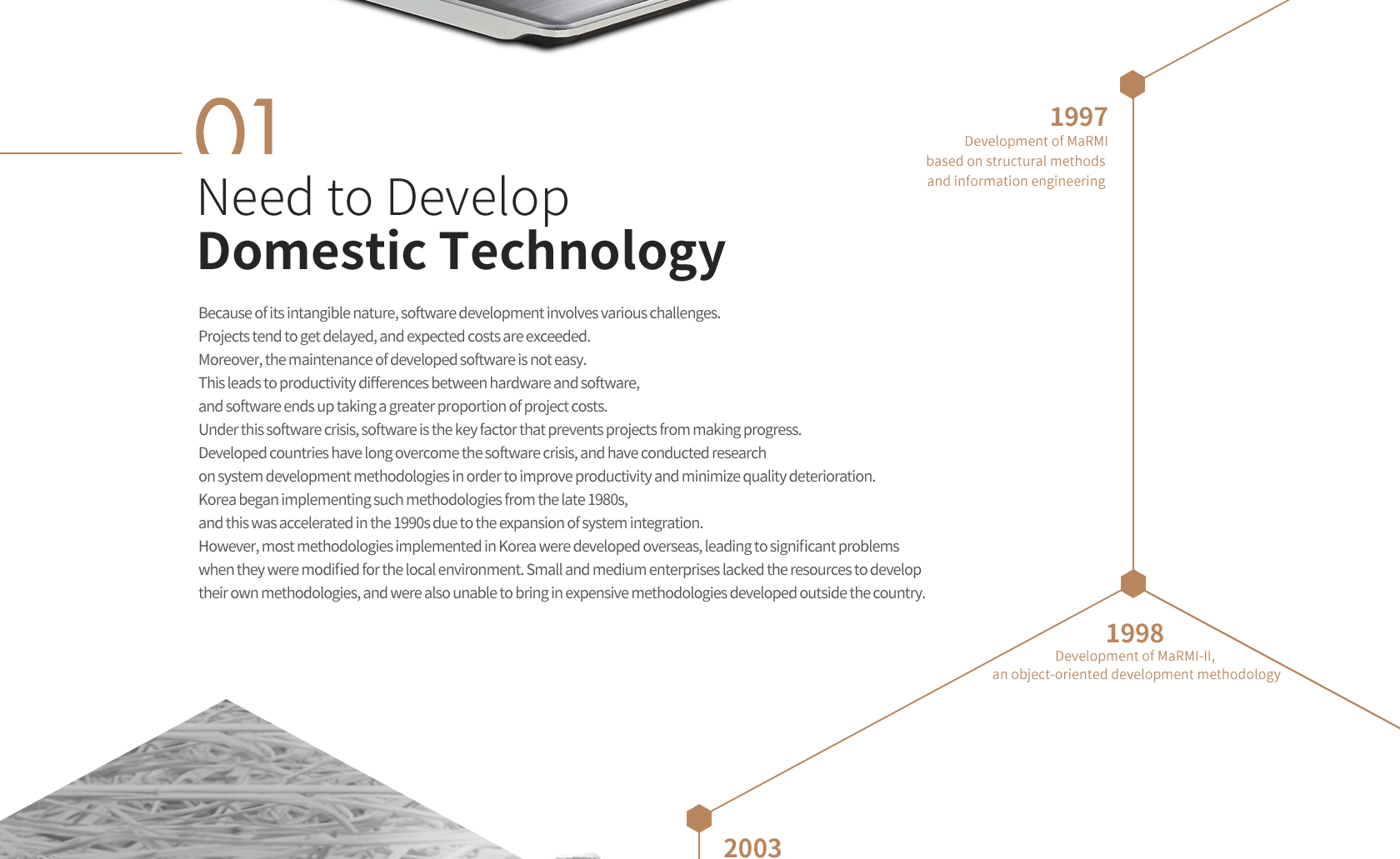
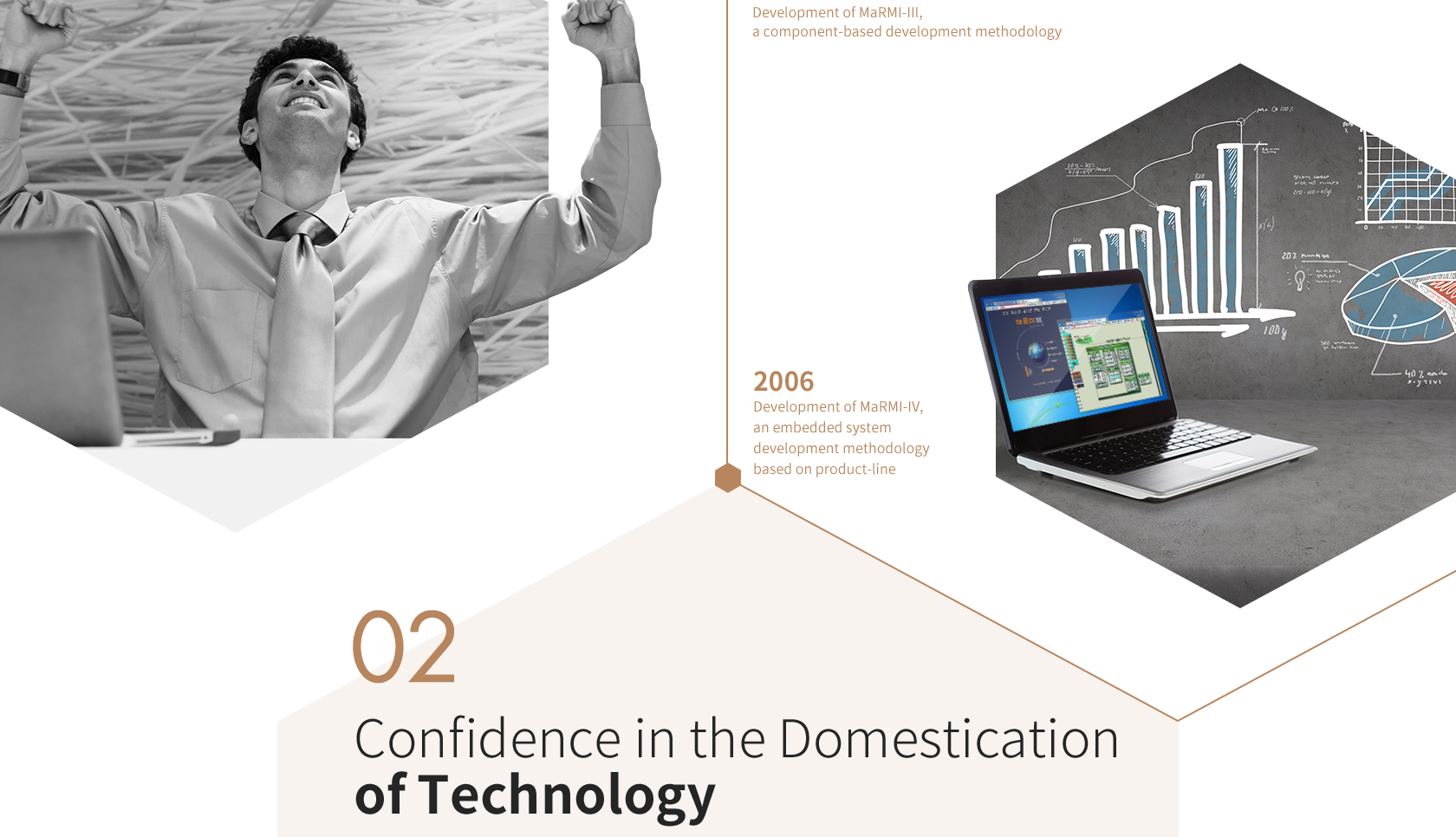
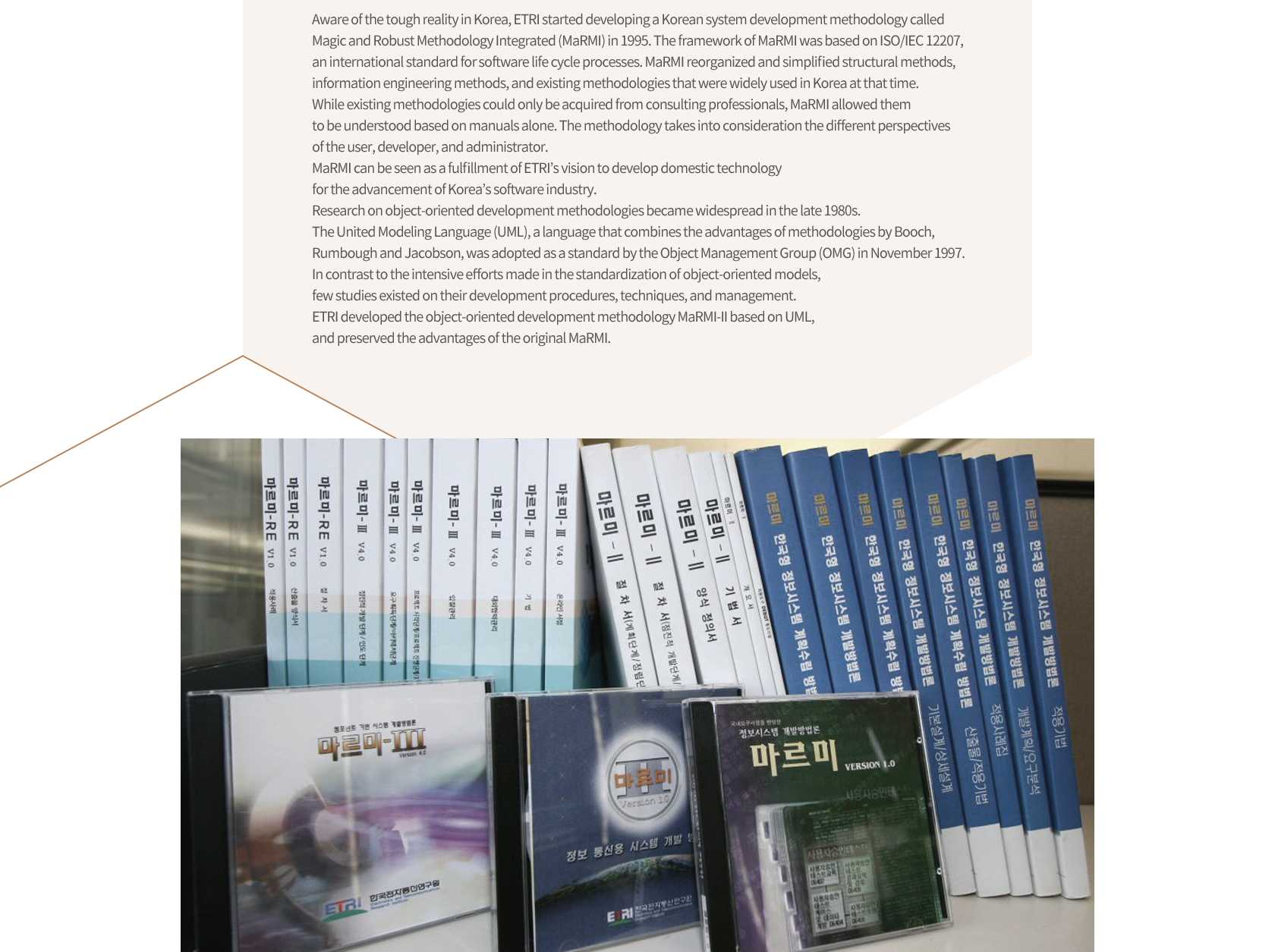
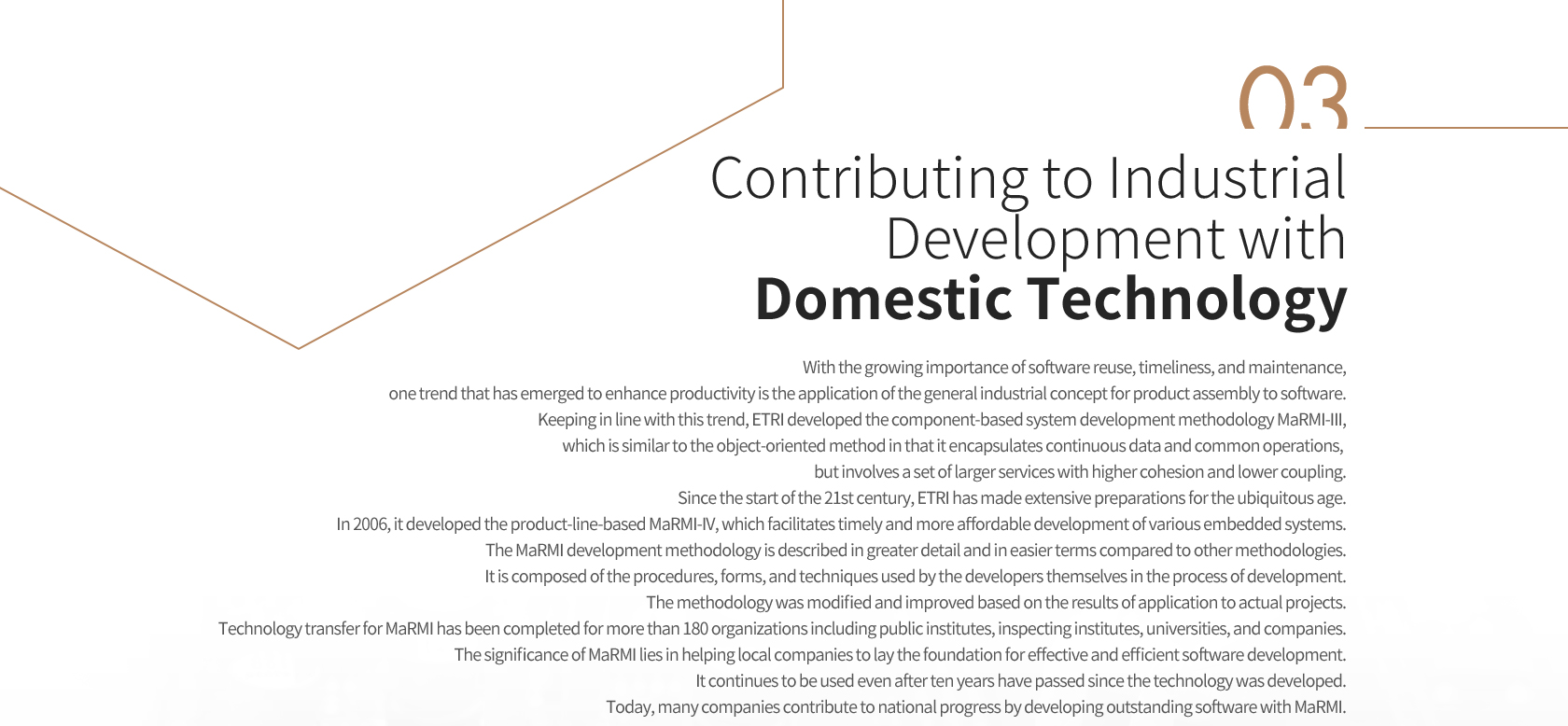

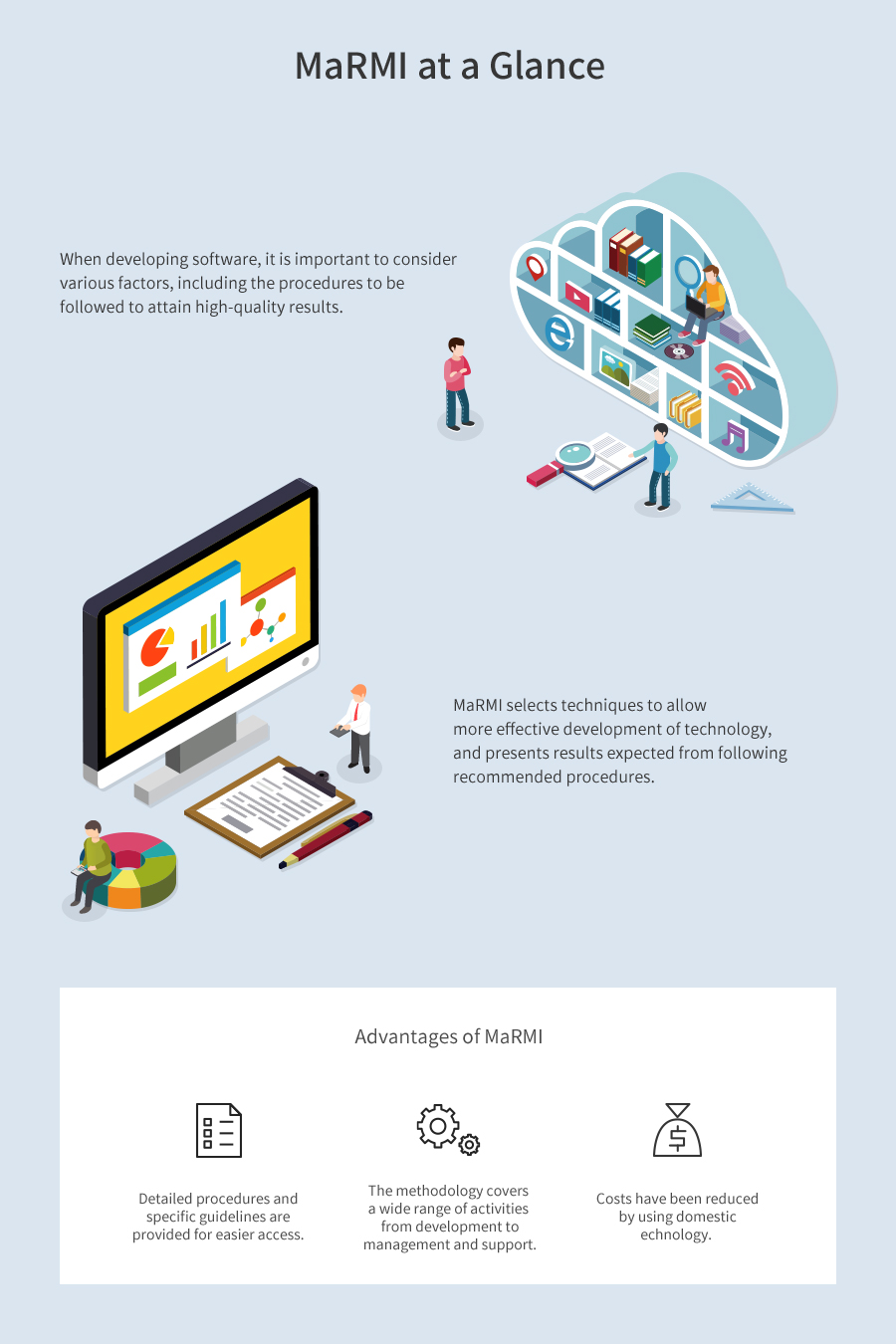
Presenting a Standardized Method
for Software Development
MaRMI is a methodology for the development of information systems in Korea. The name originates from the Korean word “mareumjil,” which refers to the tailoring of clothes.
This system development methodology reorganizes concepts, methods, techniques, procedures, and experiential knowledge so that they are more compatible with the environment in Korea.
01
Need to Develop
Domestic Technology
Because of its intangible nature, software development involves various challenges. Projects tend to get delayed, and expected costs are exceeded. Moreover, the maintenance of developed software is not easy. This leads to productivity differences between hardware and software, and software ends up taking a greater proportion of project costs. Under this software crisis, software is the key factor that prevents projects from making progress.
Developed countries have long overcome the software crisis, and have conducted research on system development methodologies in order to improve productivity and minimize quality deterioration. Korea began implementing such methodologies from the late 1980s, and this was accelerated in the 1990s due to the expansion of system integration.
However, most methodologies implemented in Korea were developed overseas, leading to significant problems when they were modified for the local environment. Small and medium enterprises lacked the resources to develop their own methodologies, and were also unable to bring in expensive methodologies developed outside the country.

02
Confidence in the Domestication
of Technology
Aware of the tough reality in Korea, ETRI started developing a Korean system development methodology called Magic and Robust Methodology Integrated (MaRMI) in 1995. The framework of MaRMI was based on ISO/IEC 12207, an international standard for software life cycle processes. MaRMI reorganized and simplified structural methods, information engineering methods, and existing methodologies that were widely used in Korea at that time. While existing methodologies could only be acquired from consulting professionals, MaRMI allowed them to be understood based on manuals alone. The methodology takes into consideration the different perspectives of the user, developer, and administrator. MaRMI can be seen as a fulfillment of ETRI’s vision—to develop domestic technology for the advancement of Korea’s software industry.
Research on object-oriented development methodologies became widespread in the late 1980s. The United Modeling Language (UML), a language that combines the advantages of methodologies by Booch, Rumbough and Jacobson, was adopted as a standard by the Object Management Group (OMG) in November 1997. In contrast to the intensive efforts made in the standardization of object-oriented models, few studies existed on their development procedures, techniques, and management. ETRI developed the object-oriented development methodology MaRMI-II based on UML, and preserved the advantages of the original MaRMI.
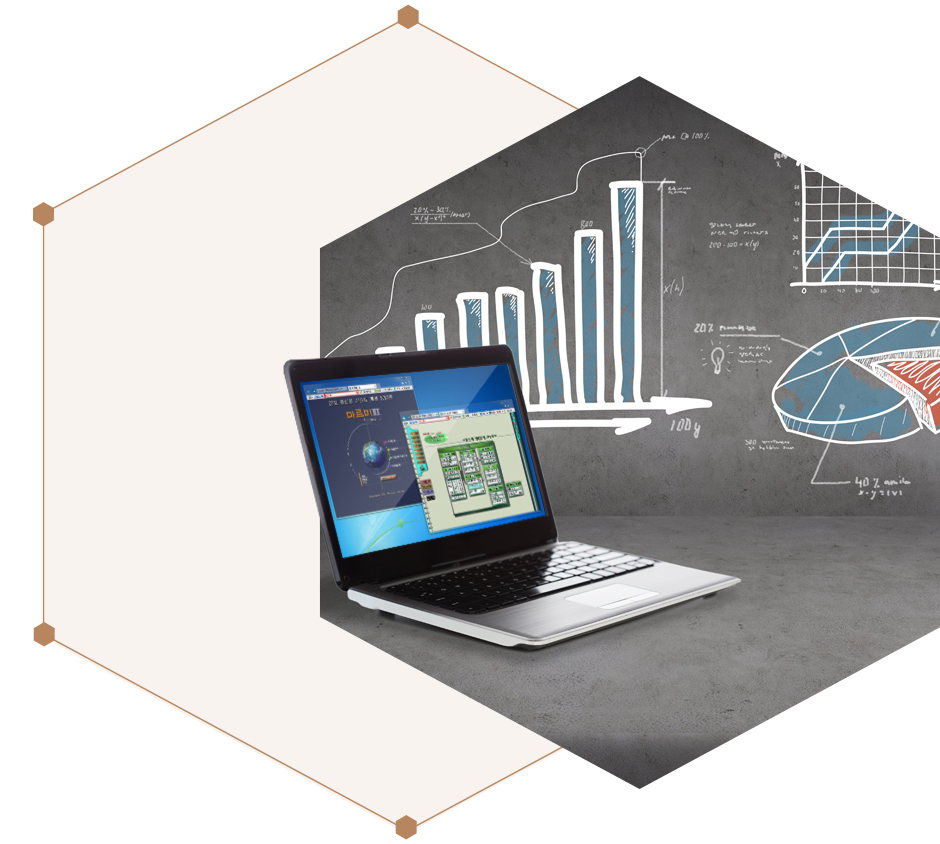
03
Contributing to Industrial Development
with Domestic Technology
With the growing importance of software reuse, timeliness, and maintenance, one trend that has emerged to enhance productivity is the application of the general industrial concept for product assembly to software. Keeping in line with this trend, ETRI developed the component-based system development methodology MaRMI-III, which is similar to the object-oriented method in that it encapsulates continuous data and common operations, but involves a set of larger services with higher cohesion and lower coupling.
Since the start of the 21st century, ETRI has made extensive preparations for the ubiquitous age. In 2006, it developed the product-line-based MaRMI-IV, which facilitates timely and more affordable development of various embedded systems. The MaRMI development methodology is described in greater detail and in easier terms compared to other methodologies. It is composed of the procedures, forms, and techniques used by the developers themselves in the process of development. The methodology was modified and improved based on the results of application to actual projects.
Technology transfer for MaRMI has been completed for more than 180 organizations including public institutes, inspecting institutes, universities, and companies. The significance of MaRMI lies in helping local companies to lay the foundation for effective and efficient software development. It continues to be used even after ten years have passed since the technology was developed. Today, many companies contribute to national progress by developing outstanding software with MaRMI.
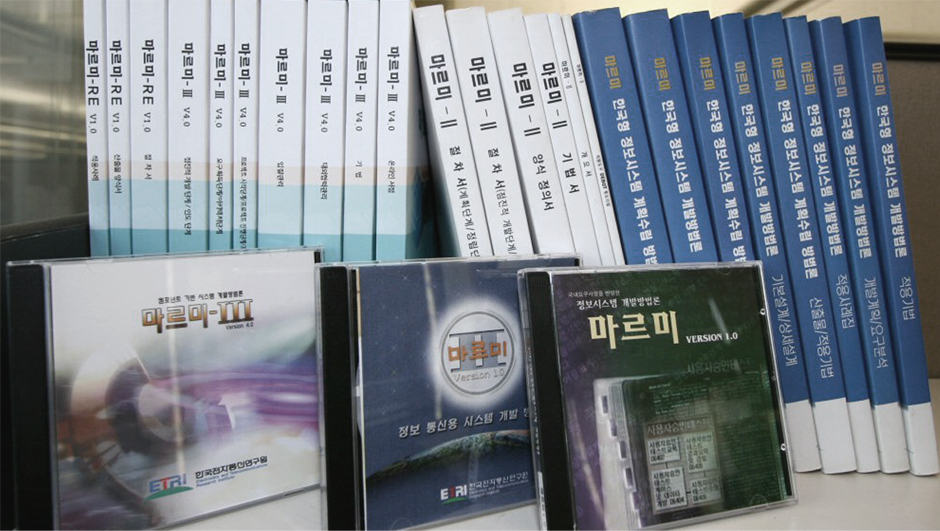
- 1997.
- Development of MaRMI based on structural methods and information engineering
- 1998.
- Development of MaRMI-II, an object-oriented development methodology
- 2003.
- Development of MaRMI-III, a component-based development methodology
- 2006.
- Development of MaRMI-IV, an embedded system development methodology based on product-line








